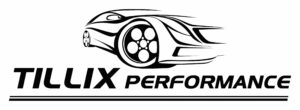Without going into the science of it, I will attempt to explain in very simple terms how it works. Each car is different so I will be using average figures when I talk figures later on.
AFR is Directly Proportional to EGT
Air is measured in weight (yes it weighs something ) generally measured in grams.
Fuel is normally measured in volume (millilitres), but can be measured in weight also.
If you have 1 gram of air and 1 millilitre of fuel to mix with it, your air fuel ratio is 1:1.
The higher this ratio in a diesel, the cooler the engine will run! Exact opposite to petrol tuning which most people are more used to working with.
At idle and very light running on a diesel it is common for them to run 36:1 all the way up to 75:1.
Extremely lean resulting in fantastic economy (turbo petrols will run no leaner than 17:1 without starting to misfire at cruise and idle and no leaner than ~12.5:1 under full load without starting to do damage)
Under high load conditions, most standard diesels will run between 18:1 and 24:1 fuel ratio.
Some vehicles will run leaner, some will run richer. Most Di Engines will be in the 20 Range, and most common rail engines will be just under 20:1 at full load.
Adding a chip and increasing the fuel will always lower this air fuel ratio unless the boost is raised at the same time.
On a well setup engine you can reasonably expect around a 15-20 kw gain for each 1 air fuel ratio point increase.
Some chips advertise a guaranteed 20-30% increase in power and to achieve this will run the engine far richer than ideal.
But a proportional increase in EGT also which can reduce engine life.
How do we fix that then? As I have explained earlier, you want to burn more diesel but do it efficiently? Increase the amount of air, or cool the air you have down further to allow more oxygen to burn it.
This is why upping the boost (within reason), increasing intercooler efficiency, adding a free flowing exhaust, fitting a free flow intake filter etc.. are absolutely essential if you want to do it the safe way, not the cheap way.
Far to often Power and Torque graphs are used and taken as gospel when they offer little information on the way the engine has been tuned.
Without an air fuel ratio and boost graph, you have no way of knowing if the tune is sustainable or reliable for you needs.

